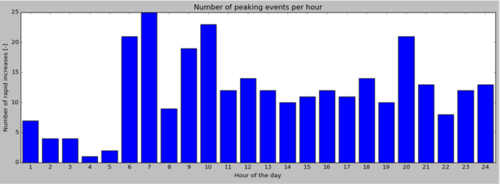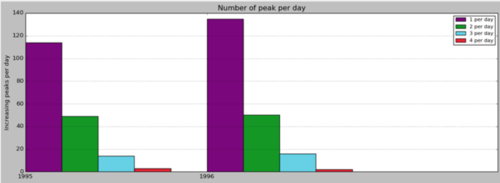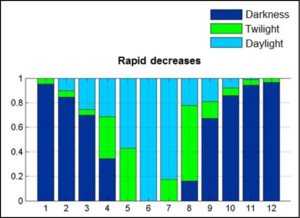Difference between revisions of "COSH-tool"
Bendikhansen (talk | contribs) |
Bendikhansen (talk | contribs) |
||
| Line 6: | Line 6: | ||
Type: Tool (computer model) | Type: Tool (computer model) | ||
| − | Suitable for: [[Mitigating_rapid,_short-term_variations_in_flow_(hydro-peaking_operations)|Mitigating rapid, short-term variations in flow (hydro-peaking operations)]] in all phases (planning, implementation, maintenance) | + | Suitable for the following measures: [[Mitigating_rapid,_short-term_variations_in_flow_(hydro-peaking_operations)|Mitigating rapid, short-term variations in flow (hydro-peaking operations)]] in all phases (planning, implementation, maintenance) |
=Introduction= | =Introduction= | ||
Revision as of 11:48, 17 January 2019
Quick summary
Developed by: SINTEF Energy Research
Date: 27-11-2018
Type: Tool (computer model)
Suitable for the following measures: Mitigating rapid, short-term variations in flow (hydro-peaking operations) in all phases (planning, implementation, maintenance)
Introduction
COSH-Tool is a software written in Python used for quantifying fluctuations in water level and discharge which may occur in rivers subjected to hydropeaking. COSH-Tool was developed at SINTEF Energy as a part of the CEDREN EnviPeak project (Norwegian Research Council, Grant number 193818) with the aim of providing characteristics of hydropeaking events in regulated rivers in order to classify the hydropeaking regimes of rivers. The tool enables the analysis of long time series of water level or discharge by applying an automated processing to the time series. It provides a set of indicators that characterize fluctuations of water level and discharge in rivers and lakes/reservoirs.
Application
COSH-Tool can be applied to any water level or discharge time series provided by measurements (field work) or simulation (numerical modelling). The analysis of the time series with COSH-Tool does not require any coding from the user and is executed through an interface.
Input files: The input file is a water level or discharge time series. COSH-Tool handles time series with typical time step ranging from minute to hour.
Output files: COSH-Tool computes a set of parameters that characterise water level and discharge fluctuations. The parameters can be classified in three categories: 1) magnitude of the variations; 2) timing and rapidity; and 3) frequency. The parameters are listed in Table 1.
The output from COSH-Tool consists in a table with statistics of the magnitude and timing parameters (category 1 and 2) and a set of graphs of corresponding graphs. Statistics are min, max, mean, median, standard deviation and percentiles. They can be computed for the entire time series, as well as on a monthly, seasonal and yearly basis. Statistics are also displayed in the form of box plots.
COSH-Tool provides also values and graphs for all frequency parameters (category 3), namely distribution of peaks throughout the day (Figure 2), number of peaks per day for each year of the time series (Figure 3), and total number of peak events per year.
Additionally, the light conditions (day, twilight, darkness) at the time of the occurrence of the peaks can be computed. A graph provides the proportion of peaks occurring at the different types of light conditions per month (Figure 4).
Other information
The COSH-Tool is free of use after agreement with SINTEF Energy Research.
Contact information
Julie.charmasson@sintef.no



